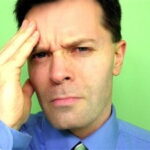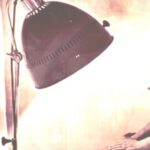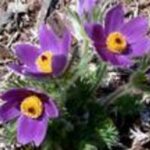A patient lies face down on a treatment table and there’s a hole for her face. Lying flat she cannot see what’s going on. The administrator applies massage oil to her back and picks up a cotton ball with tongs. The cotton ball is dipped in alcohol, set afire, placed inside a glass cup for one second and placed on her back.
The procedure is Ba Guan which is fire cupping. It’s an ancient Chinese medical practice treating a variety of ailments. For centuries medical manuals have documented cupping for digestive disorders, headaches, toothaches, migraines, infertility, uterine menstrual cramps and orthopedic conditions to name a few.
When placed on the body the suction in the cup, caused by the fire, creates a negative pressure vacuum. This sucks surrounding skin and surface muscles into the cup and the skin reddens and rises as blood rushes in. The action promotes Qi and circulation of interstitial fluids.
Chinese medicine believes Chi Qi circulation is necessary to maintain health and well being. There are many Qi’s and this one is Wei Qi which is life force. Life force protects and every organ has its own such as heart qi, stomach qi and liver qi.
In fire cupping the body is divided into fourteen meridians. There’s a meridian for each of the twelve inner organs one for the spine and one across the abdomen. Along the meridians are healing points for specific diseases or ailments.
The heated cup is applied at one of the healing points. The sucking of skin and surface muscle into the cup improves circulation and is like a deep massage. Stagnation ceases and Chi Qi flows throughout the body promoting health and well being. The cups are sometimes moved across the lubricated skin while still attached. This allows a larger area of skin and surface muscles to be pulled. As a result tight sore muscles and the fascia surrounding the muscle fiber relax, and full range of motion and flexibility is restored.
The back is frequently cupped because it’s fleshy and allows more space for cups. The meridians along the spine and across the abdomen also expose more healing points. A patient’s back can likewise be cupped to draw toxins from the lungs to relieve respiratory problems such as pneumonia, bronchitis, asthma and a cold.
The cups are left in place for about 10 minutes and removed by pressing the skin next to the rim of the cup. This lets air in which equalizes pressure and the cup comes off. The skin will be red from the increased blood flow and some bruising can be expected from the pressure of the rim. It usually disappears in two to three days. Cupping can be repeated as soon as redness and bruises disappear. Patients report minimal discomfort with fire cupping.
Fire cupping was first recorded by a Taoist alchemist and herbalist around 300 A.D. Animal horns were used for cups to drain pustules. The Tang Dynasty used cupping to treat diseases like pulmonary tuberculosis which was followed by the Qing Dynasty using cups made of bamboo and pottery. Documented records report success treating headaches, dizzy spells and solar plexus pain.
Native Americans, too, practiced fire cupping but as they were infiltrated into Caucasian society their medical practices were lost to history.
The twentieth century introduced glass cups and cupping was modernized. Glass cups began to be used almost exclusively. Glass was sturdier than pottery, didn’t wear out like bamboo, was easier to make and less expensive than brass and iron cups.
There are two types of fire cupping dry and wet. Dry cupping is on dry skin and wet cupping involved cutting the skin so bleeding occurred.
To wet cup the skin was washed with warm water to enlarge the veins dried and a heated cup applied. When skin was sucked into the cup and became red the cup was removed. A spring loaded device with 12 small blades was placed on the skin the spring tripped and 12 small cuts were made in the flesh. The cup was reheated and reapplied and three to five ounces of blood were taken. After the cup was removed the wound was treated with lint and plastic.
Leeches were sometimes used to wet cup because when the leech bites its saliva contains an anti-clotting agent. The wound would bleed longer simplifying the process of withdrawing blood. In most cases the patient was allowed to choose either the knives or leeches
Fire cupping was done in homes for thousands of years and lore passed down from family to family. Today the Chinese fire cup in government sponsored hospitals of traditional Chinese medicine.
Although it can be practiced in homes a licensed acupuncturist should administer the treatment. There are circumstances in which fire cupping shouldn’t be done. It’s not recommended to cup over irritated skin, or if patient has a high fever bleeds easy or is subject to convulsions and cramps. Treatments shouldn’t be given on abdomen or lower back if pregnant. Only fleshy areas should be used and the cup should not be moved over bony areas such as the spine.
The effectiveness of fire cupping is debated. Early manuscripts document success and modern records are consistent with feelings of energy and well being after a treatment. The effectiveness of cupping depends on the effectiveness of the administrator.
Since the mid 1800’s the practice of cupping has decreased because medical science has undergone a change from the Holistic method of hands on treatment to treating the inside of the body.
Subhuti Dharmananda, Cupping, itmonline.com
Ben Ross, Ba Guan, Chinese Fire Cupping, benross.net
Elizabeth Reninger, What is Qi (Chi), About.com
PBS, A Brief History of Bloodletting, pbs.org
Wood Tiger Massage, LLC, The Therapeutic Technique of Cupping, woodtigermassage.com



